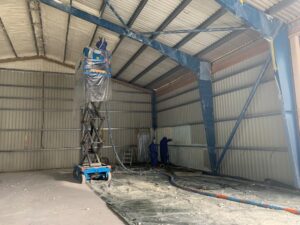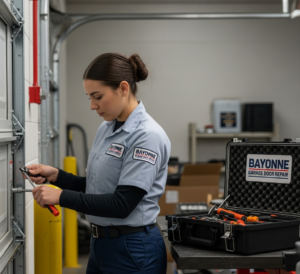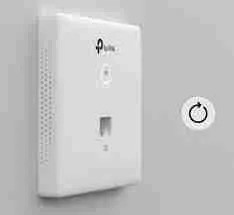Fiberglass Batt Insulation vs. Foam: Which Is Better for Homes in Hernando County?
In Hernando County, Florida, where the climate is dominated by intense summer heat and high humidity levels, selecting the right type of insulation isn’t just a matter of energy efficiency—it’s a matter of overall home comfort and resilience. Homeowners frequently find themselves weighing the pros and cons of two popular insulation options: traditional fiberglass batt insulation and modern foam insulation.
While fiberglass batts have been a mainstay in residential construction for decades due to their affordability and ease of installation, they fall short when it comes to long-term efficiency in challenging climates. Foam insulation, especially closed-cell spray foam, typically offers greater thermal control, moisture resistance, and air sealing—making it better suited for Florida’s subtropical conditions.
This comprehensive comparison breaks down how each material performs, what to expect in terms of installation and maintenance, and which option delivers the best value and protection for your home in Hernando County.
Understanding the Basics: Fiberglass Batts vs. Foam Insulation
Fiberglass Batt Insulation
Fiberglass batts consist of spun glass fibers compressed into flat, rectangular sections that fit into wall cavities, attic floors, and crawlspaces. Widely available and relatively inexpensive, they remain a go-to for many builders and DIYers.
Advantages:
- Low upfront cost for materials and installation
- Available at most home improvement stores
- Non-combustible and fire-rated
- Easy to install for those with basic handyman skills
Drawbacks:
- R-Value is significantly lower per inch than spray foam
- Loses effectiveness if compressed or exposed to moisture
- Requires vapor barriers to prevent moisture accumulation
- Air leakage is common without additional sealing materials
Foam Insulation (Closed-Cell & Open-Cell)
Foam insulation is applied as a liquid that expands to fill gaps, cracks, and irregular cavities. This seamless application makes it ideal for both new construction and retrofits. Closed-cell foam is denser and more rigid, while open-cell foam is softer and more flexible.
Advantages:
- Excellent R-value and air sealing capability
- Closed-cell version resists moisture and vapor
- Can increase the structural strength of walls and roofs
- Reduces infiltration of outdoor allergens and pollutants
Drawbacks:
- Higher initial material and labor cost
- Requires trained professionals for application
- May necessitate additional ventilation systems due to tight sealing
Technical Comparison Table
| Feature | Fiberglass Batts | Closed-Cell Spray Foam | Open-Cell Spray Foam |
|---|---|---|---|
| R-Value (per inch) | R-2.9 to R-3.8 | R-6.5 to R-7 | R-3.5 to R-4 |
| Moisture Resistance | Low | Excellent | Moderate |
| Air Leakage Control | Poor | Excellent | Good |
| Sound Dampening | Good | Moderate | Excellent |
| Installation Method | Manual | Spray-applied | Spray-applied |
| Structural Reinforcement | None | Yes | No |
| Lifespan (approx.) | 10-20 years | 20-30 years | 15-20 years |
How Each Performs in Hernando County’s Climate
Managing Humidity and Moisture
Florida’s humid climate is notorious for promoting mold and mildew. Closed-cell spray foam creates an impermeable barrier against moisture ingress, helping prevent structural rot and indoor air quality issues. In contrast, fiberglass can absorb moisture and lose up to 50% of its insulating value when wet.
Bonus Tip: Closed-cell spray foam not only prevents moisture infiltration but also discourages insects and rodents by eliminating air gaps.
Dealing with Heat and Thermal Drift
During long, hot summers, insulation needs to prevent thermal drift. Foam insulation creates a tighter thermal envelope, minimizing heat transfer and making it easier to maintain interior temperatures. Fiberglass, with its lower R-value and susceptibility to airflow, is more likely to allow hot spots and temperature swings.
Bonus Tip: Homes with consistent indoor temperatures see less HVAC strain, extending the lifespan of their heating and cooling systems.
Energy Efficiency and Utility Savings
According to the U.S. Department of Energy, improving a home’s insulation can reduce energy bills by up to 40%. Foam insulation stands out by dramatically reducing conditioned air loss, especially in attics and crawlspaces.
Market Insight: Local utilities, such as Florida Power & Light, often offer rebates or incentives for energy-efficient insulation systems, making foam upgrades more cost-accessible.
Bonus Tip: Energy Star-certified contractors can help homeowners maximize their insulation rebates and tax credits.
Things to Consider Before Choosing Insulation
1. Home Age and Structural Complexity
Older homes with non-standard framing often benefit more from spray foam, which conforms tightly to irregular shapes. Fiberglass batts may leave gaps in such settings, leading to inefficiency.
2. Ventilation and Indoor Air Quality
While foam insulation creates an airtight seal, it can also trap indoor pollutants without mechanical ventilation systems. Homes should be evaluated for proper airflow before installation.
3. Budget Constraints and Available Incentives
Fiberglass may be the better short-term solution for budget-conscious homeowners. However, foam offers long-term utility savings, which often recoup the initial investment within a few years.
4. Intended Use of Space
If insulating an area like an attic that will be used for storage or living space, foam’s superior sealing and moisture control offer added benefits.
Common Homeowner Questions
Is spray foam safe after installation?
Yes. Once fully cured, spray foam is inert, non-toxic, and does not emit harmful gases or particulates.
Can you install fiberglass batts over old insulation?
Yes, but you must ensure that existing insulation is dry and mold-free. Improper layering may reduce effectiveness.
Which is more suitable for unvented attics?
Closed-cell spray foam excels in unvented attic applications, providing air sealing and moisture resistance.
Does insulation impact home resale value?
Energy-efficient insulation often contributes to higher resale values and increased buyer interest.
Is DIY foam installation advisable?
No. Proper spray foam application requires expertise in chemical handling, mixing ratios, and safety precautions.
Finding the Right Insulation Expertise
When it comes to selecting insulation for homes in Hernando County, the choice between fiberglass batts and foam insulation hinges on your priorities—upfront cost versus long-term savings, basic functionality versus performance under pressure.
For homeowners seeking professional guidance or services, On the Mark Spray Foam Insulation is a provider with experience in this field.
Readers can learn more about On the Mark Spray Foam Insulation’s services:
Company: On the Mark Spray Foam Insulation
Phone: (813) 921-0444
Email: tommybaldwin901@gmail.com
Explore insulation services for Florida homes













